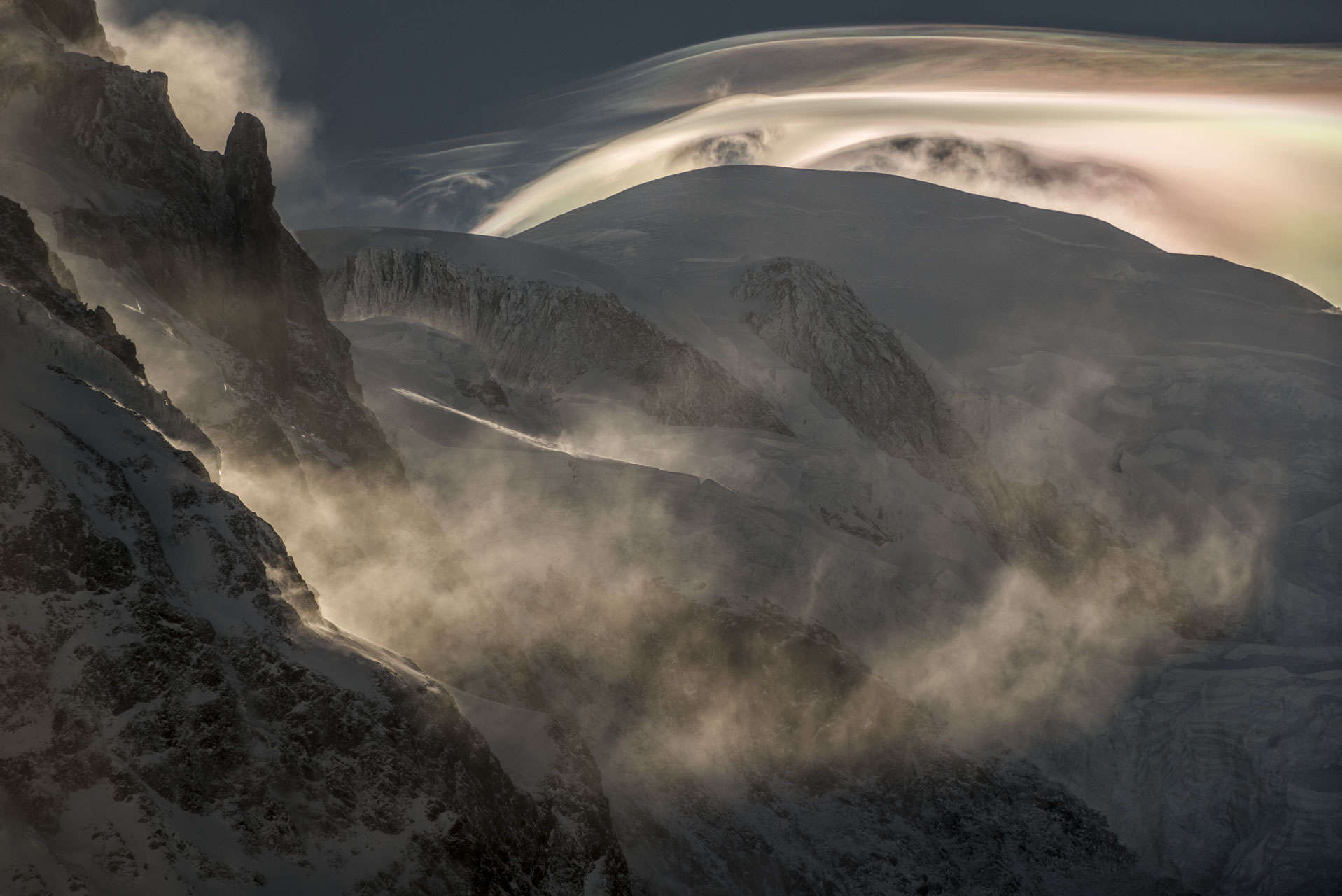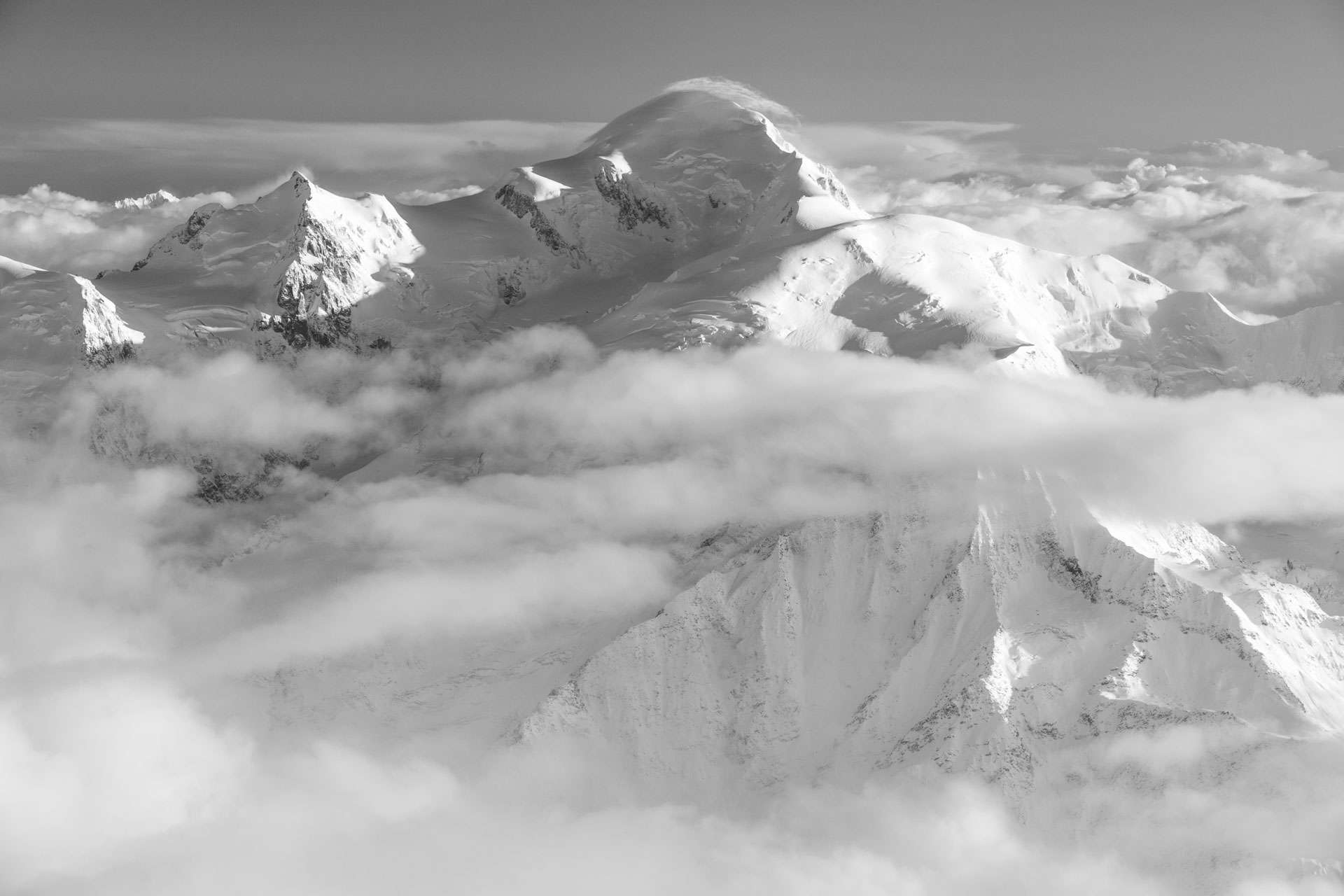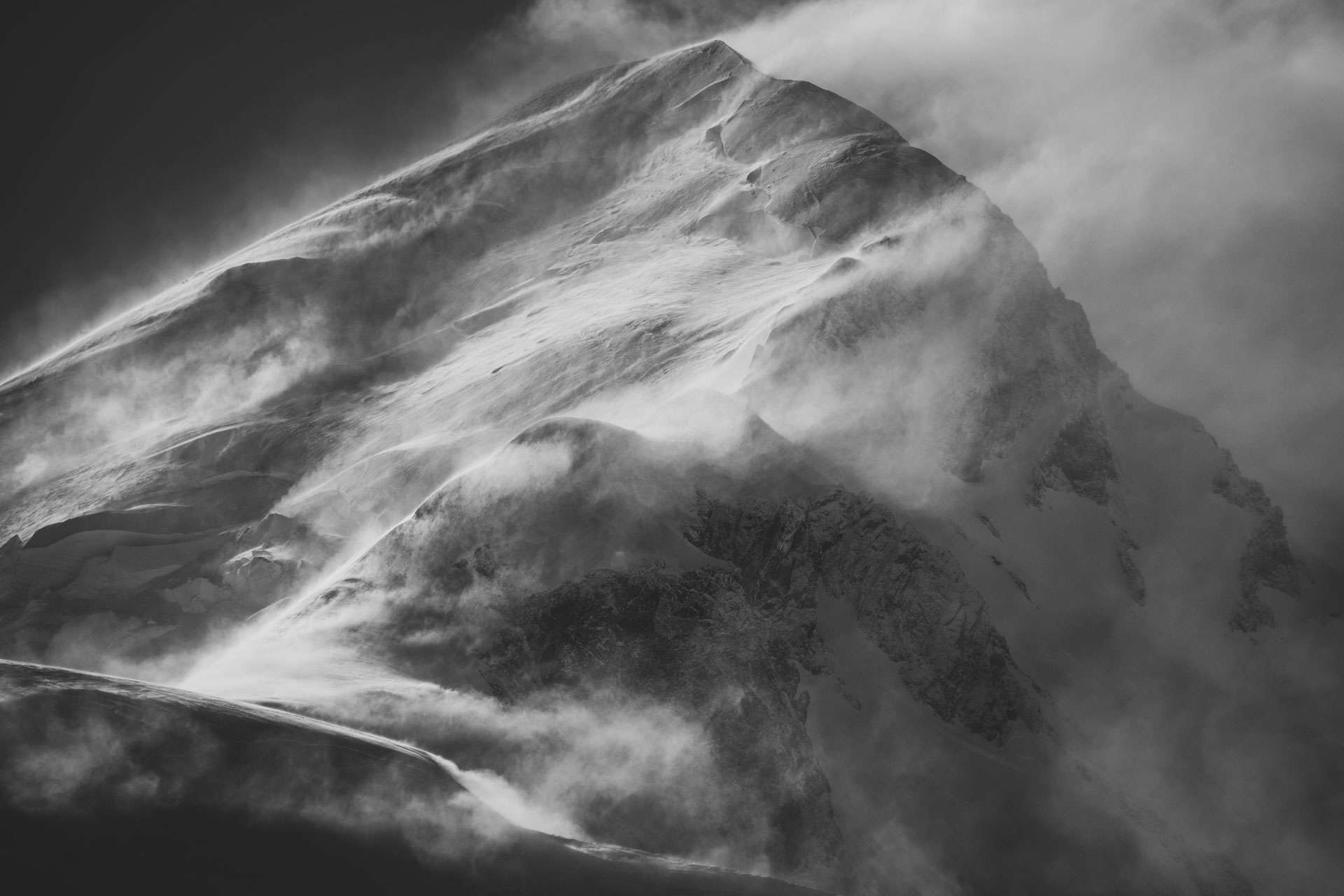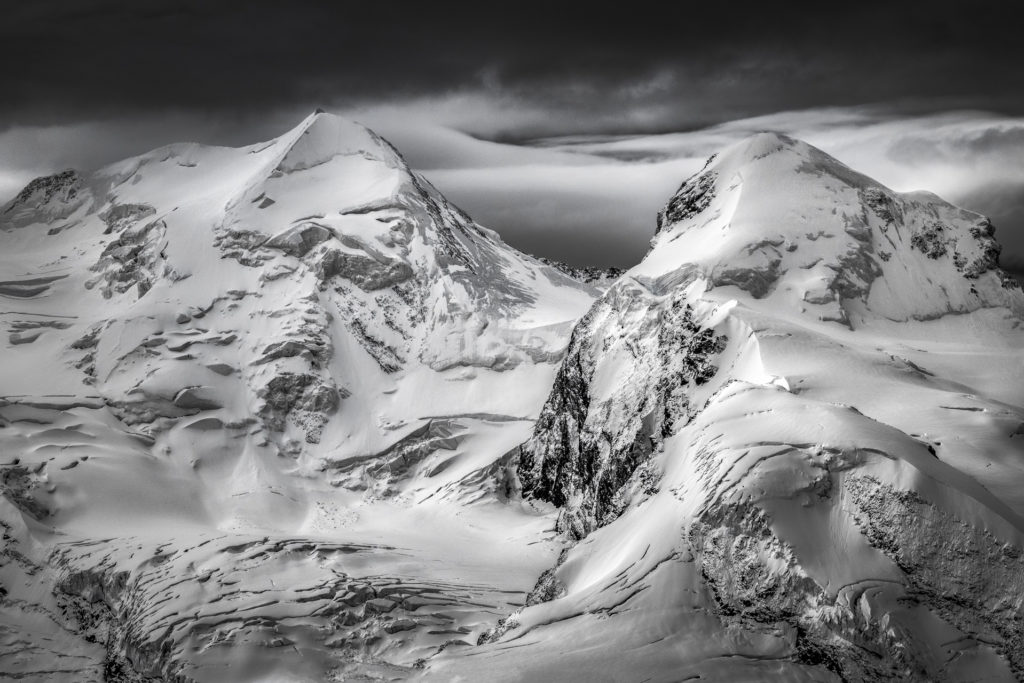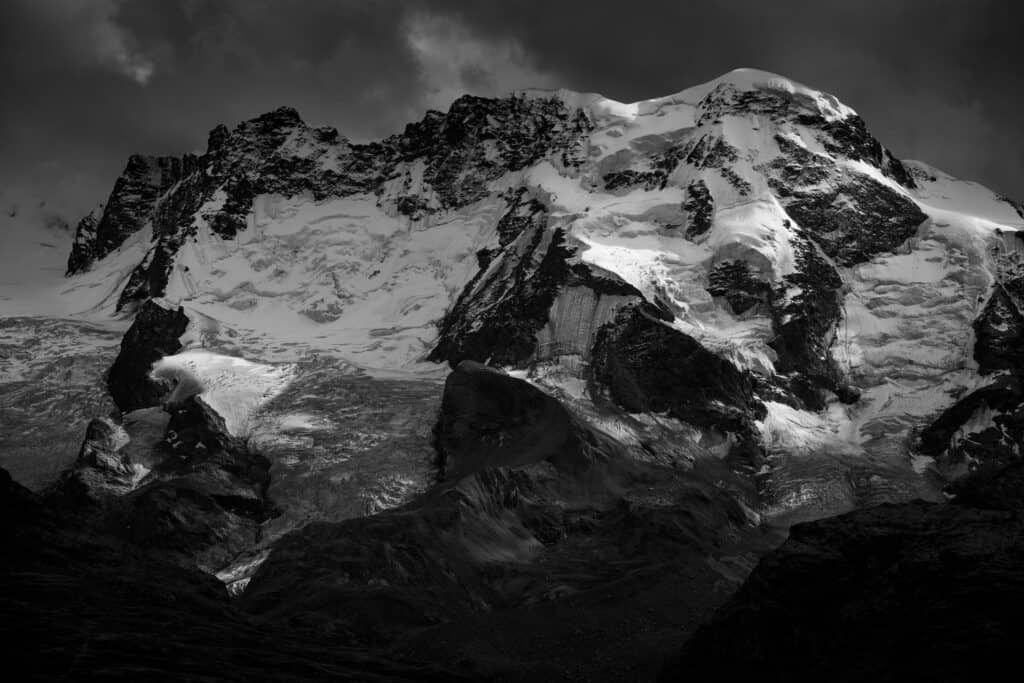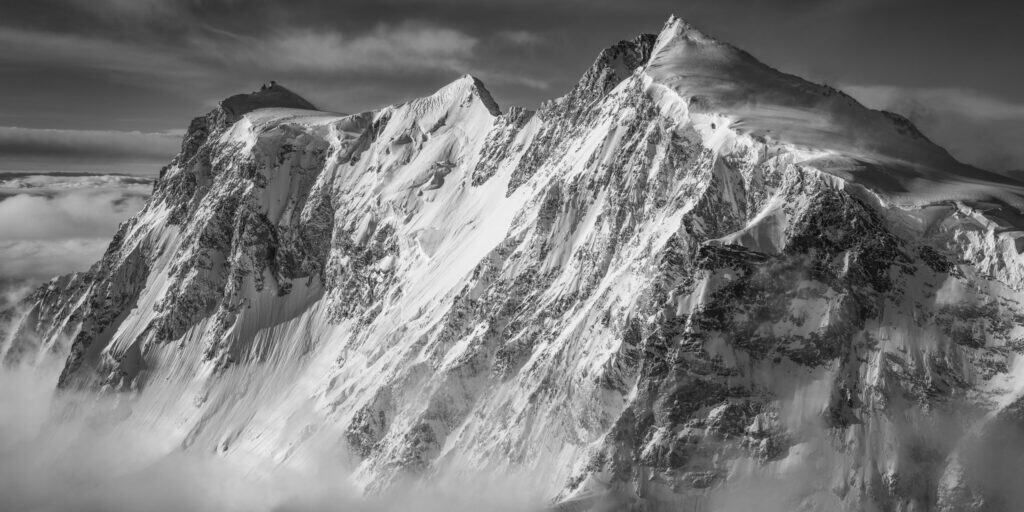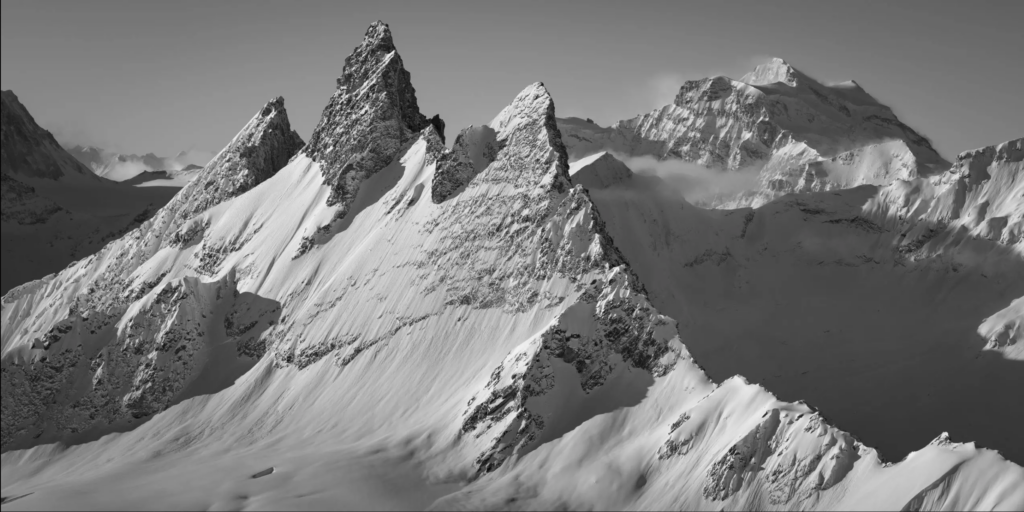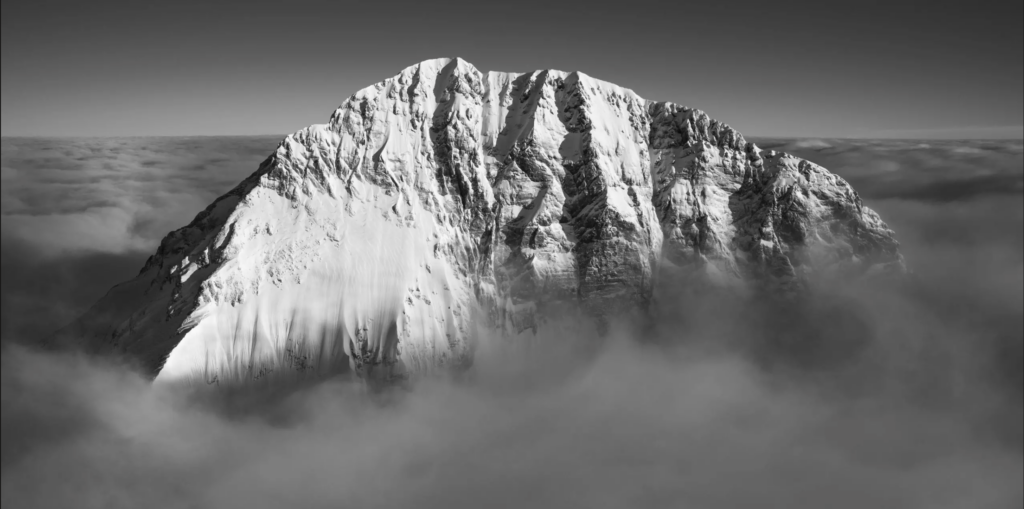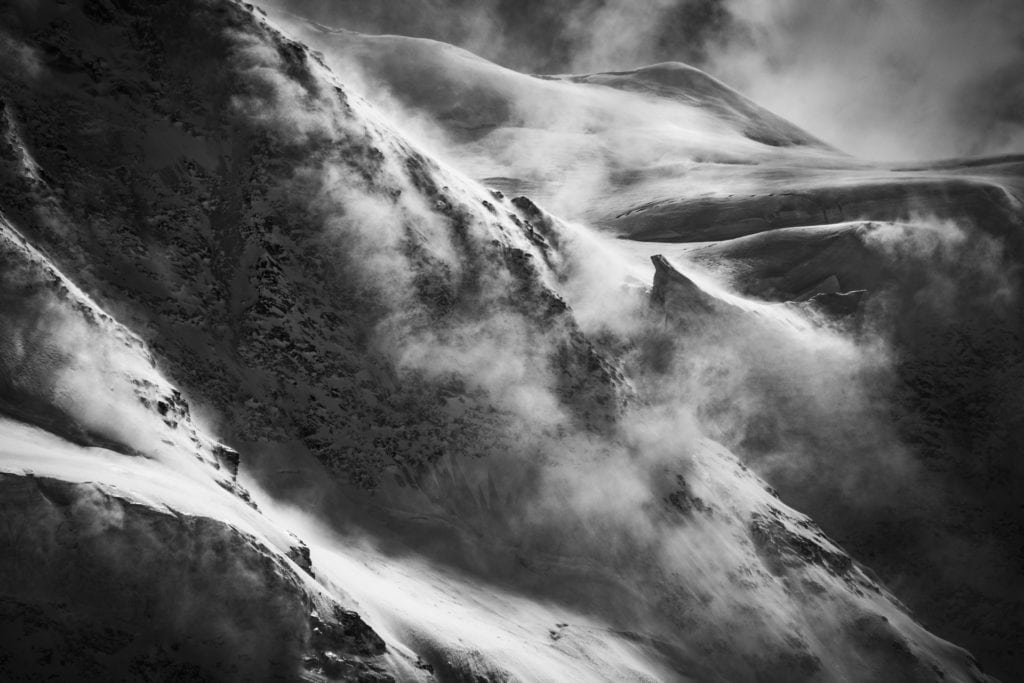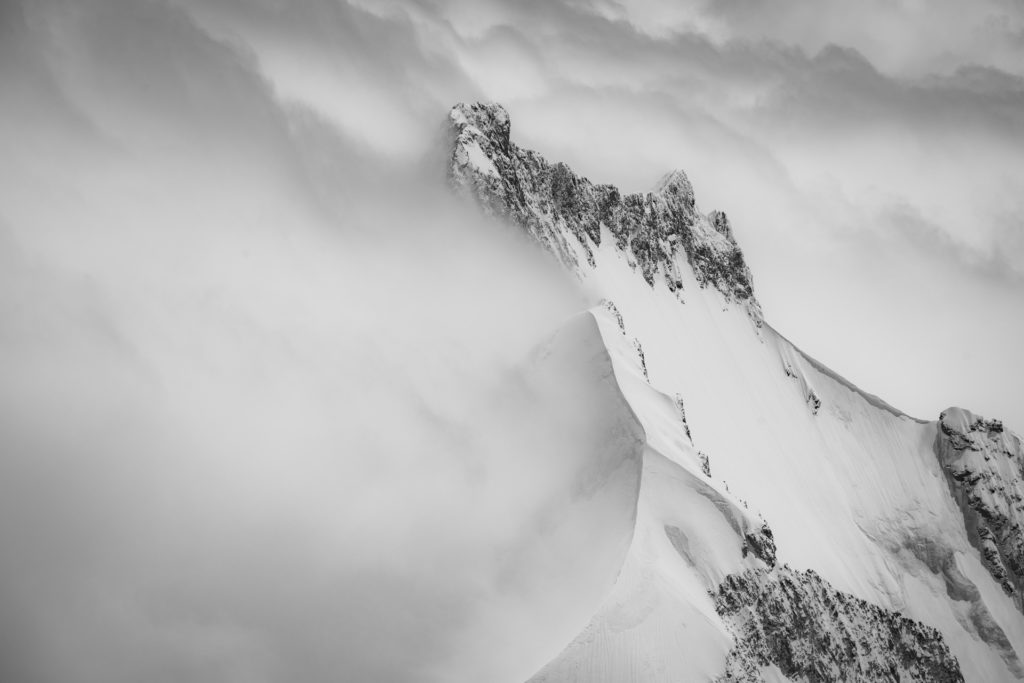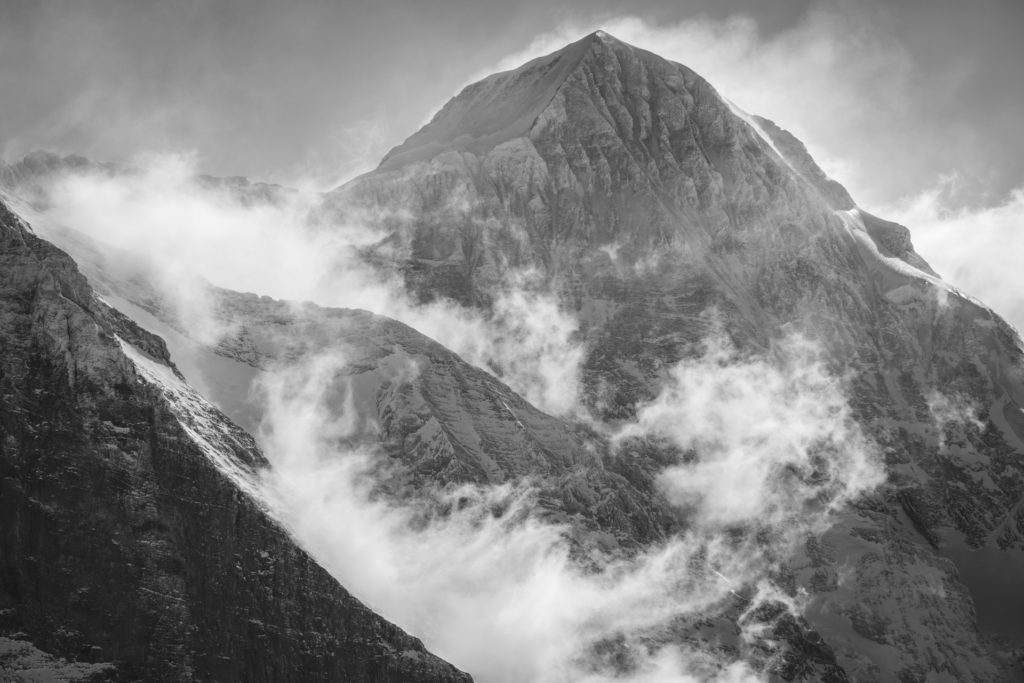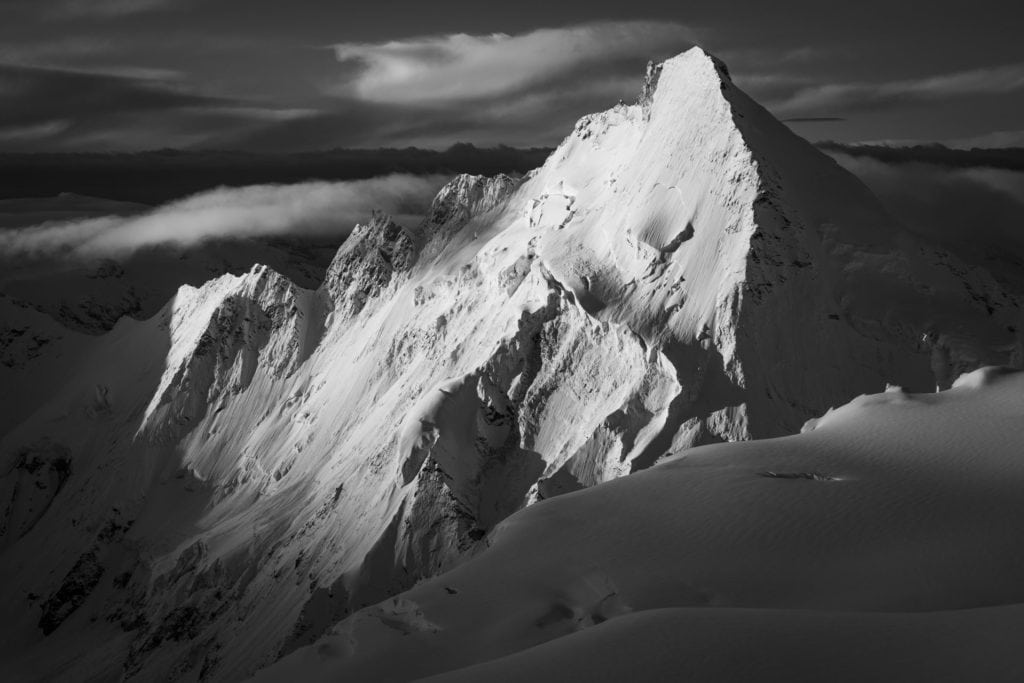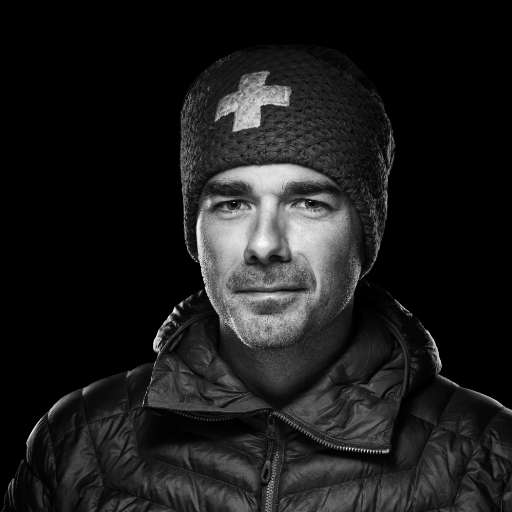High above Chamonix, Mont Blanc rises to an altitude of 4808m. The highest peak in the Alps, it is also the highest summit in Western Europe. Defying the laws of nature, it defies man's attempt to conquer it. Like a diamond in the rough, it fascinates explorers, dazzles mountaineers and inspires the world. But do we really know what its history is? Here's my portrait of Mont Blanc at the summit the Alps.
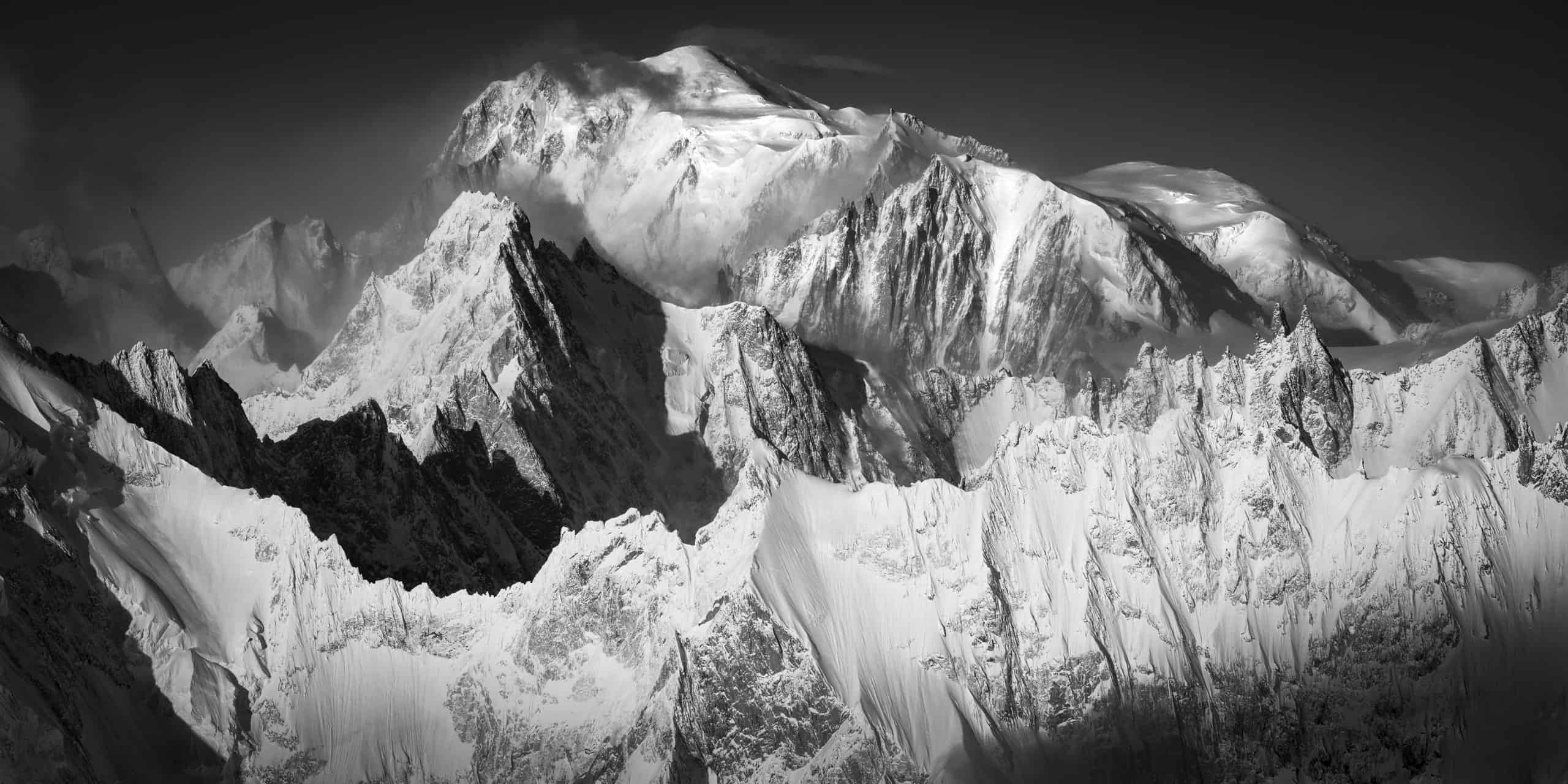
Portrait du mont Blanc: A legendary summit born in the Alps
At a time when tectonic plates are colliding, seas are burning and the Alps are rising from the bowels of Thetys, Mont Blanc is awakening. A Titan of micaschist, gneiss and granite, its dome marbled with snow and ice reaches skyward. On the borders of Haute-Savoie and Valle d'Aosta, the mountain overlooks the towns of ChamonixMont Blanc, Courmayeur and Saint-Gervais-les-Bains. The "Toit de l'Europe" (roof of Europe) dominates the summits the Mont Blanc massif, watering their glaciers and watching over their combes.
A nurturing mother and emblem of the Alps, the mountain grows up far from the light. Legend has it that the massif was once verdant. Cattle were herded here under a radiant sun. In Roman times, herds crossed the Giant's Pass to pastures that reached for the sky. But one fine day, the highest summits in Europe were overshadowed. The ice demons seized their last alpine pastures, demanding that the animals retreat to the depths of the valleys. In the 17th century, the Little Ice Age turned Mont Blanc into a lost paradise. Rivers turned to ice and the rock giant became known as Mont Maudit or Les Glacières. This formidable, gigantic summit was feared by mountain dwellers. Only a few crystal-cutters and chamois hunters dared approach it. And it is said that the Mer de Glace threatened Chamonix to such an extent that processions were organized in the hope of halting its advance.

The mountain only came into the limelight in the 18th century, when imagination gave way to science, relegating the darkness to the status of memories. In 1778, this high summit was named Mont Blanc for the first time on William Faden's map of Switzerland. Since then, the man-made ruler of the Alps has shone brightly.
History of Mont Blanc: First attempts to climb to the summit the Alps
From 1760 onwards, Horace Bénédict de Saussure was determined to be the first to conquer Mont Blanc. Deep down, he sensed that the mountain concealed beneath its icy cap the well-kept secret of Alpine orogeny. To finally unravel the mystery of the geological formation of the Alps would be to advance science! In 1774, he ventured onto the slopes of Mont Chamonix with his guide, Jean-Laurent Jordaney.
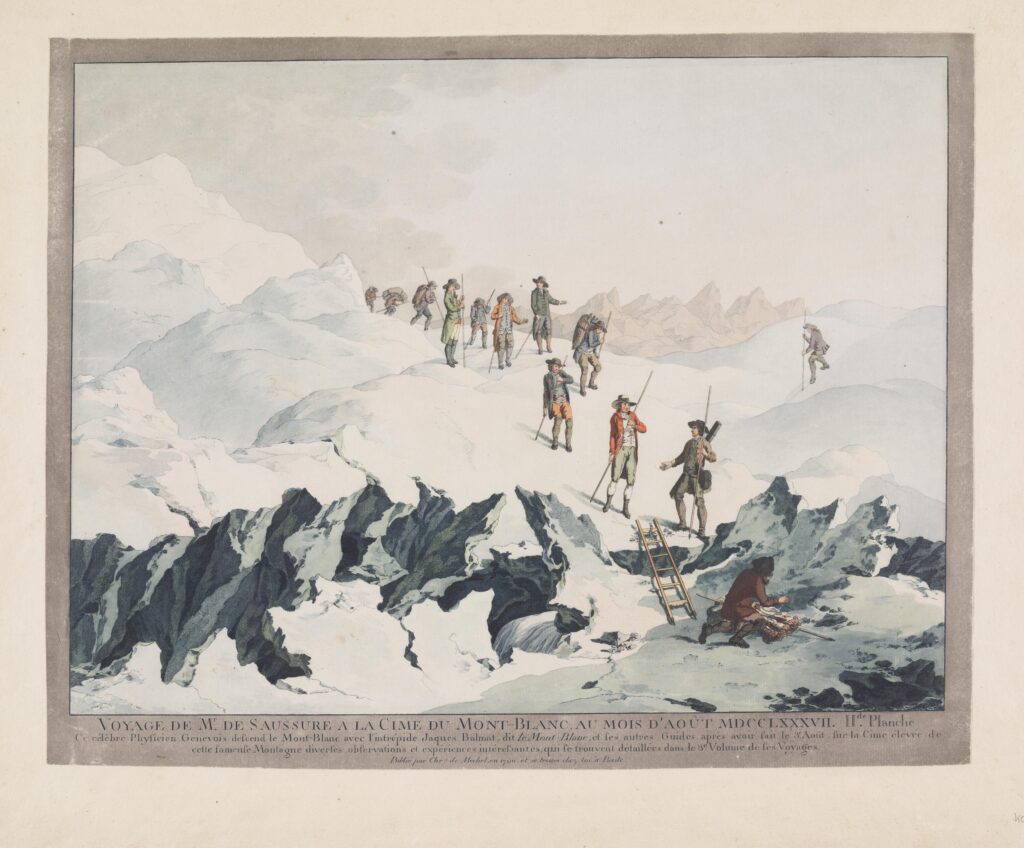
For the first time on July 3, 1775, four guides set out to reach the summit Mont Blanc via the Grands Mulets. But fatigue and the vagaries of the weather prevented them from completing their expedition. A succession of ascent attempts followed. In 1783, Marie Couttet, Joseph Carrier and Jean-Baptiste Lombard took the same route, but the scorching sun finally got the better of them. Mont Blanc resists repeated human assaults.
On June 29, 1786, five guides decided to meet up on the Col du Dôme to climb to the Dôme du Goûter: Jean-Michel Cachat, François Paccard, Marie Couttet and Jacques Balmat went via the Montagne de la Côte, while Pierre Balmat and Jean-Marie Couttet went via the Aiguille du Goûter. But the Bosses ridge soon stood in their way. The storm was threatening and it was getting late. The climbers had no choice but to descend, leaving Jacques Balmat alone up there, determined to explore the rocks in search of crystals. Surprised by the darkness, he was forced to bivouac among the ice. When he finally reached the valley the next day, the villagers were in for a huge surprise: man could survive the darkness of the high mountains! From now on, nothing is impossible.
First ascent of Mont Blanc: a high-mountain feat
On August 7, 1786, Jacques Balmat and Michel Paccard quietly left the Chamonix valley, determined to conquer the mountain. Horace Bénédict de Saussure had promised to offer a reward to those who were the first to climb Mont Blanc. They took up the challenge. From the Bossons, they set off for the Montagne de la Côte to bivouac. They spend the night under the stars, in what is now the Gîte de Balmat.
On August 8, 1786, the two explorers had a date with history. They set off at 4:15 a.m. to follow the route of the Grands Mulets. For hours, they climbed relentlessly. The conditions were difficult, with Mont Blanc towering above them. Their footsteps sank in the snow, fatigue overtook them, but they persevered. At around 3 pm, they reach the Grand Plateau, then head east over the increasingly steep walls above the Rochers Rouges. From the valley, their advance becomes visible, and the more curious can observe their audacity through a telescope. Crossing the Petits Rouges and then the Petits Mulets, they neared their goal. And at 6:23 p.m., Jacques Balmat and Michel Paccard had accomplished the feat! They tread the summit of this mountain without measure.

The mountaineers have just completed the first ascent of Mont Blanc, fulfilling their wildest dream. Proud and happy with their achievement, they thank the heavens for being there, at the heart of this world of rock and ice. All around them, everything seems grandiose. The Alps below salute their dazzling feat. And as the news spread through the valleys, man had conquered Mont Blanc! Mountaineering was born of their tenacity. For a few minutes, Jacques Balmat and Michel Paccard enjoy the exceptional panorama stretching out around them. Then it was time to head back down. They spend the night on the mountainside and return to the valley the next day. Two local children turned heroes.
A year later, on August 3, 1787, Horace Bénédict de Saussure climbed to the summit Mont Blanc, accompanied by 18 guides and a porter. This was the first time that the altitude of Mont Blanc had been measured from its summit. According to his calculations, the mountain rises to an altitude of 4,775 m. The Swiss physicist's ascent is considered a founding act of the mountain guide profession. The event had a worldwide impact. From then on, the high mountains seemed accessible to all. Visitors to the Alps have been flocking ever since.
The statues of Jacques Balmat and Michel Paccard now stand in the heart of Chamonix as an emblem of bravery and willpower. But this consecration did not come naturally. The story of the climbers has given rise to controversy. Michel Paccard's role in the conquest of Mont Blanc was immediately questioned by Marc-Théodore Bourrit. Years later, Alexandre Dumas echoed this disavowal in his Impressions de voyage en Suisse. The frenzy surrounding the expedition led by H.B. de Saussure in 1787 also contributed to overshadowing the victory of his predecessors and the figure of Michel Paccard. The Balmat legend became a household word and, in 1887, a statue was erected in Chamonix of Jacques Balmat and H.B. de Saussure. However, it was not until 1986 that a statue to Michel Paccard was erected in the commune. Two centuries spent in the shadow of his peers, for the brilliance of a first at the summit the Alps.
The birth of guide companies at the summit Mont Blanc
In 1820, Joseph Anderson and Joseph Hamel set out on Mont Blanc with their guides. On the mountain, the winds were so violent that the climbers had to wait at the Grands Mulets for an entire day. The next day, the two men demanded that their guides continue the climb despite the bad weather. Joseph Hamel insists, he won't give up. So, reluctantly, the team complied, progressing blindly. The snow was up to their knees. But as they climb a steep slope, the climbers cut a wind plate, triggering a terrible avalanche. In a matter of seconds, their destiny changed. Auguste Tairraz, Pierre Balmat and Pierre Carrier, the three leading guides, were swept away by the snow and fell into a crevasse. The survivors of the tragedy search for them without success, and have no choice but to leave the bodies of their companions in the hands of the mountain. It's August 20, and their hearts are at half-mast.
The disappearance of the three climbers causes immense grief to all the mountaineers. The guides, dismayed, decided it was time to unite. On May 9, 1823, to meet the challenges of their profession, the Compagnie des Guides de Chamonix was officially created. In 1850, the Courmayeur guiding company was created. Other companies followed. Regulated and structured, the guiding profession looked to the future.
Portrait of Mont Blanc at the summit the Alps: countless records
Mont Blanc now welcomed men and their record-breaking dreams. Mountaineers inaugurated new routes and made unprecedented runs. On July 15, 1865, George Spencer Mathews, Adolphus Warburton Moor, Horace and Franck Walker, Melchior and Jakob Anderegg made the first ascent of the mountain via the Brenva spur. On January 31, 1876, Isabella Straton, accompanied by Jean Charlet-Straton, Sylvain Couttet and Michel Balmat, made the first winter ascent of Mont Blanc. And there are many other firsts, on foot or skis, by paraglider or plane. Once all the walls and ridges of the King of the Alps had been explored, it was time for performance. Races, crossings, speed records. Ever more incredible feats of strength, on the frontiers of the possible. But does nature have no limits? As more and more visitors flock to Mont Blanc, what about its history and future? What about its age-old riches, its once unchanging beauty? While the mountain has watched over mankind for so many years, will they in turn be able to preserve its memory?

There's so much more I could tell you about Mont Blanc, so essential is its place at the summit the Alps. A primordial sovereign, an exceptional mountain. This portrait outlines the contours of a giant who proclaims his love of courage, high standards and adventure to the skies over Chamonix .
